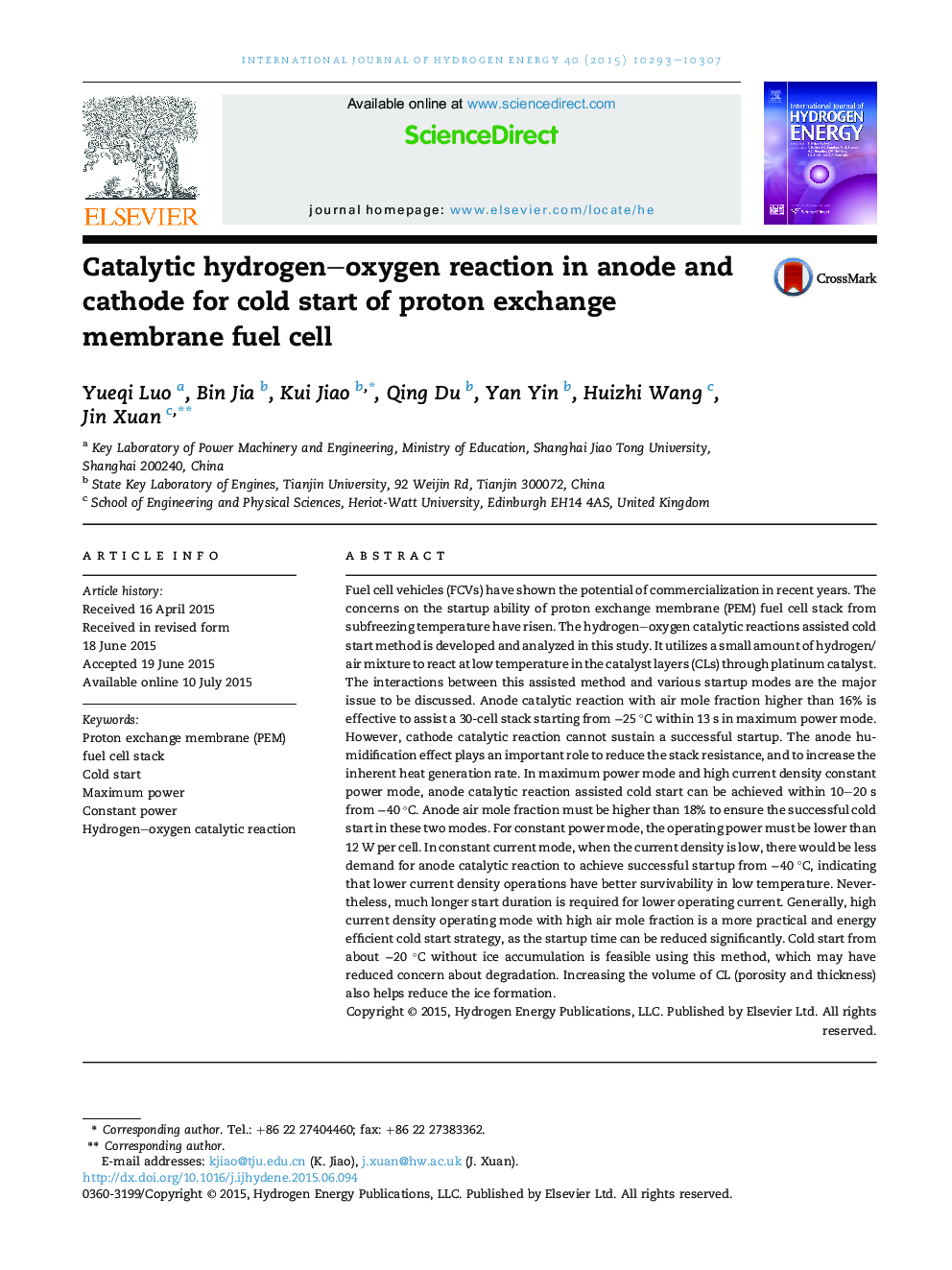| کد مقاله | کد نشریه | سال انتشار | مقاله انگلیسی | نسخه تمام متن |
|---|---|---|---|---|
| 7714898 | 1497441 | 2015 | 15 صفحه PDF | دانلود رایگان |
عنوان انگلیسی مقاله ISI
Catalytic hydrogen-oxygen reaction in anode and cathode for cold start of proton exchange membrane fuel cell
ترجمه فارسی عنوان
واکنش اکسیژن هیدروژن-اکسیژن کاتالیستی در آند و کاتد برای شروع سرد کردن سلول سوختی غشای تبادل پروتون
دانلود مقاله + سفارش ترجمه
دانلود مقاله ISI انگلیسی
رایگان برای ایرانیان
موضوعات مرتبط
مهندسی و علوم پایه
شیمی
الکتروشیمی
چکیده انگلیسی
Fuel cell vehicles (FCVs) have shown the potential of commercialization in recent years. The concerns on the startup ability of proton exchange membrane (PEM) fuel cell stack from subfreezing temperature have risen. The hydrogen-oxygen catalytic reactions assisted cold start method is developed and analyzed in this study. It utilizes a small amount of hydrogen/air mixture to react at low temperature in the catalyst layers (CLs) through platinum catalyst. The interactions between this assisted method and various startup modes are the major issue to be discussed. Anode catalytic reaction with air mole fraction higher than 16% is effective to assist a 30-cell stack starting from â25 °C within 13 s in maximum power mode. However, cathode catalytic reaction cannot sustain a successful startup. The anode humidification effect plays an important role to reduce the stack resistance, and to increase the inherent heat generation rate. In maximum power mode and high current density constant power mode, anode catalytic reaction assisted cold start can be achieved within 10-20 s from â40 °C. Anode air mole fraction must be higher than 18% to ensure the successful cold start in these two modes. For constant power mode, the operating power must be lower than 12 W per cell. In constant current mode, when the current density is low, there would be less demand for anode catalytic reaction to achieve successful startup from â40 °C, indicating that lower current density operations have better survivability in low temperature. Nevertheless, much longer start duration is required for lower operating current. Generally, high current density operating mode with high air mole fraction is a more practical and energy efficient cold start strategy, as the startup time can be reduced significantly. Cold start from about â20 °C without ice accumulation is feasible using this method, which may have reduced concern about degradation. Increasing the volume of CL (porosity and thickness) also helps reduce the ice formation.
ناشر
Database: Elsevier - ScienceDirect (ساینس دایرکت)
Journal: International Journal of Hydrogen Energy - Volume 40, Issue 32, 24 August 2015, Pages 10293-10307
Journal: International Journal of Hydrogen Energy - Volume 40, Issue 32, 24 August 2015, Pages 10293-10307
نویسندگان
Yueqi Luo, Bin Jia, Kui Jiao, Qing Du, Yan Yin, Huizhi Wang, Jin Xuan,
